I have the sketch on my panel done. This is how I actually start the oil painting itself. (About time, right?)
I like to cover the panel with a thin layer of paint pretty quickly. The reason I like it thin is because I create form by painting lighter colors on top of dar to indicate form, and I use thicker paint for those lighter colors.
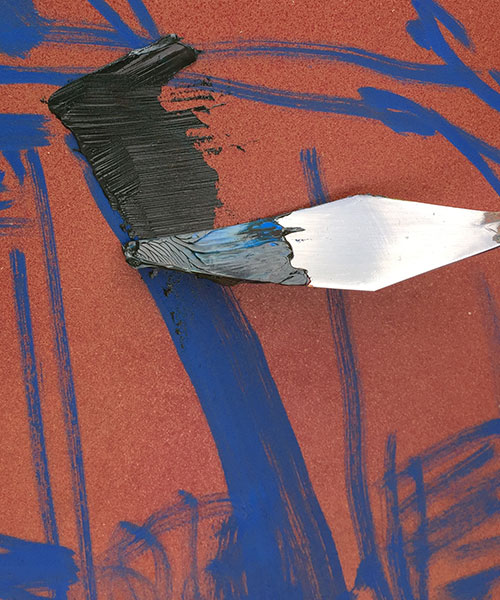
Usually, I like to start with the sky, but there wasn’t any sky in the angle I chose to paint. I decided to start with the darkest areas. I made a dark using a blend of burnt Sienna and cerulean blue. I pick some up on the underside of my knife and spread it onto the panel in an action akin to buttering a piece of toast. I try to paint a little over the lines, since I plan on covering up a lot of this layer anyway and this keeps from any unpainted panel to show.
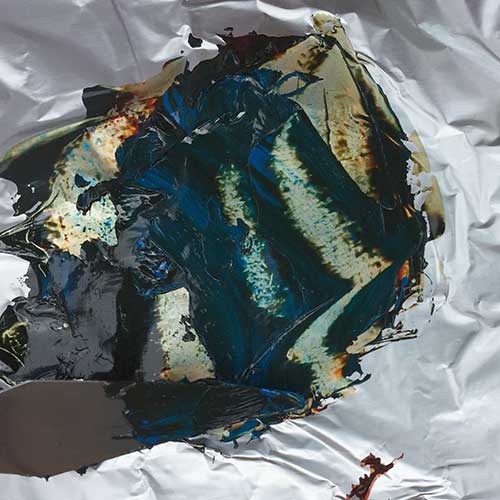
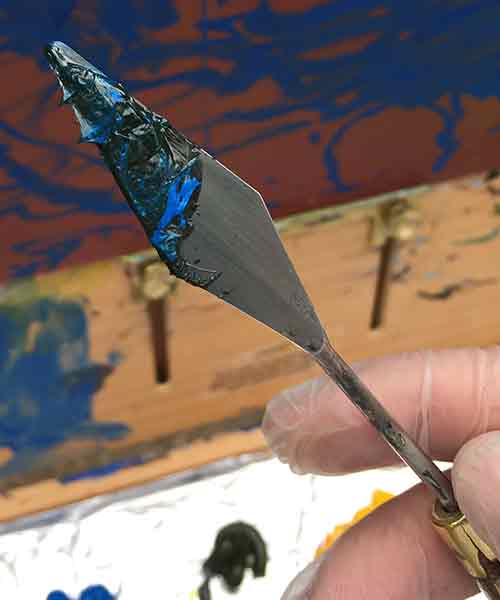
Even though, it’s an early stage, the dark looks dull and flat to me. I should probably leave it, but I couldn’t resist to add some more blue to it. I added some cerulean blue to my dark mixture, but I don’t mix it thoroughly. I want the marbleized variation in my blend.
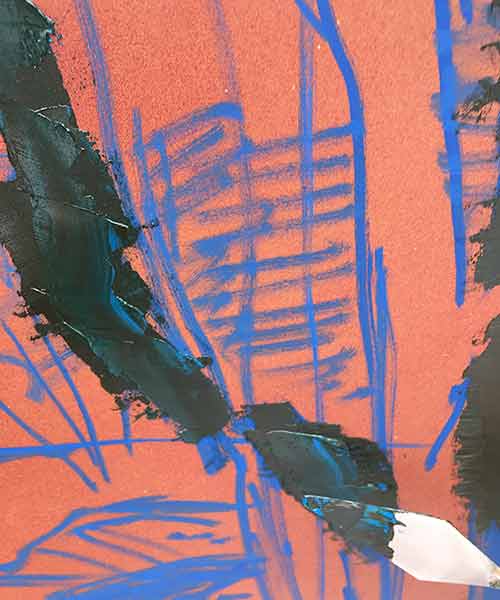
When I apply this mix of paint, I get some nice variation of color. When I apply it on top of the dull brown beneath it, I load up a nice amount and try to lay the bad flat against the surface and pull or push it. As long as I don’t angle the knife, I get nice paint coverage. I try my hardest not to paint over it again. If I make a mark and leave it alone, it looks a lot better than if I work it over. This is the hardest thing for me to do with knife painting. Once I apply paint, it’s so instinctive and tempting to go over a part that may not be covered by multiple spreads of the knife. That often ends up killing a nice spot of color variation.
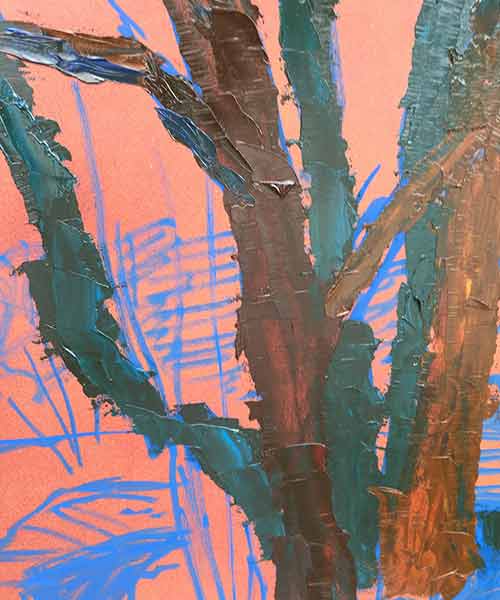
When I look into my scene, I see the trunks in the back are darker and cooler. The ones in front are lighter and warmer. They’re reflecting more light. So I try to indicate that with different types of dark paint. Some are cooler bluish darks; others are warmish brown darks. I try to apply my paint in interesting directions. If they’re all done the same way, the textures would be as boring as if I used the same color all over the panel.
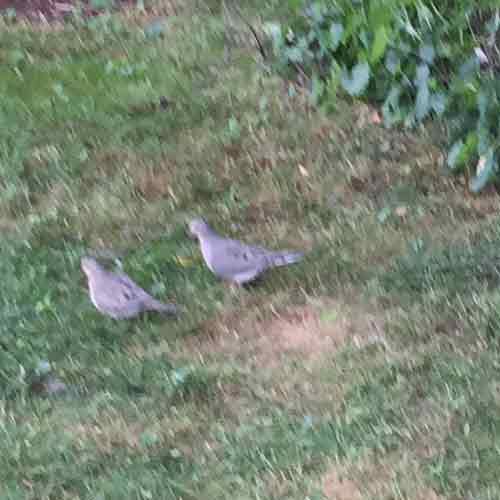
Well, look who just plopped down a mere couple yards from me. A couple beautiful morning doves, eating some birdseed left from when we fed our birds yesterday. They’re not in my sketch, but I can’t leave them out of my painting. Since they have no problem hanging around while I paint nearby, I gotta include them into my scene.
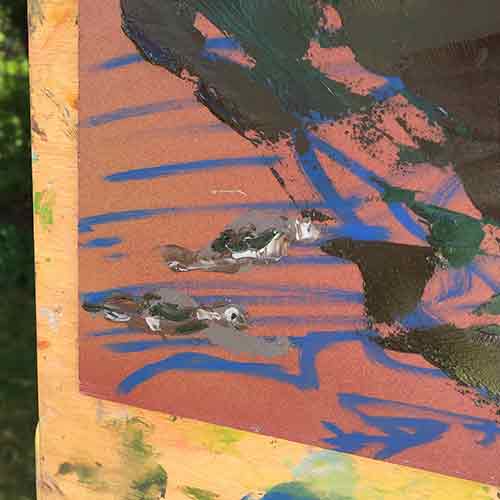
I don’t know how long they’ll hang around, so I paint them as quick as I can. I have to say, blending the exact warm gray of their feathers took a little time. I appreciated the birds’ patience on this.
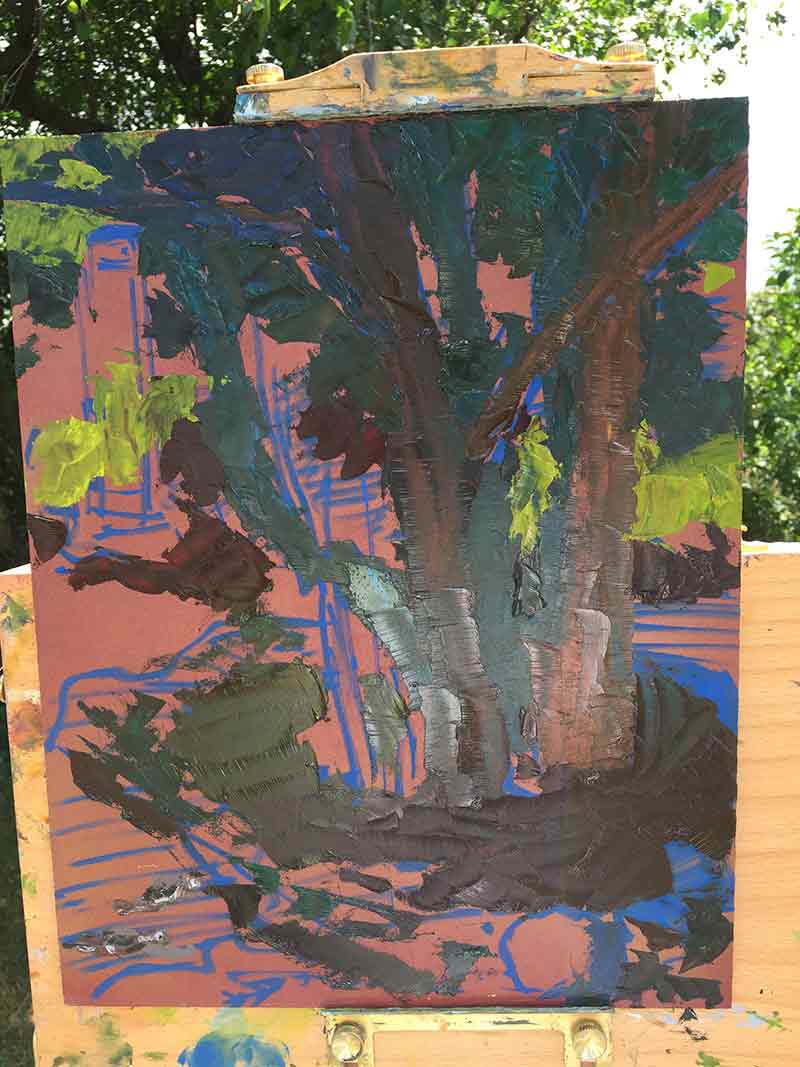
I start adding some darks to the soil at the base of the tree, knowing that later I will be adding a circle on violet leaves all around it. I also started adding some brother greens to indicate the sunlit yard behind the trees.
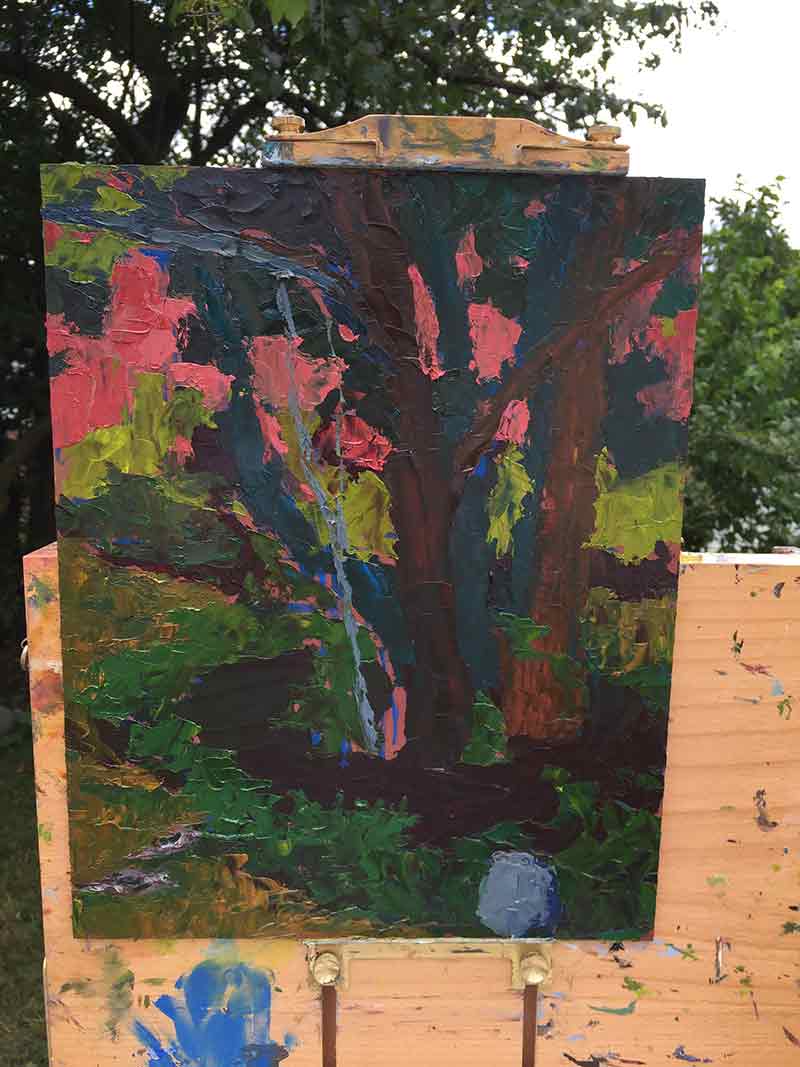
Okay, my panel is pretty much blocked in all over. It looks rough, but I have a nice layer of paint all over that I can go on top of with thicker paint. In some ways, this is basically a basic color sketch. Now it’s time to add thicker paint on top to make it look more like the scene I want it to be.
And that’s what I’ll show you next blog entry.

Recent Comments